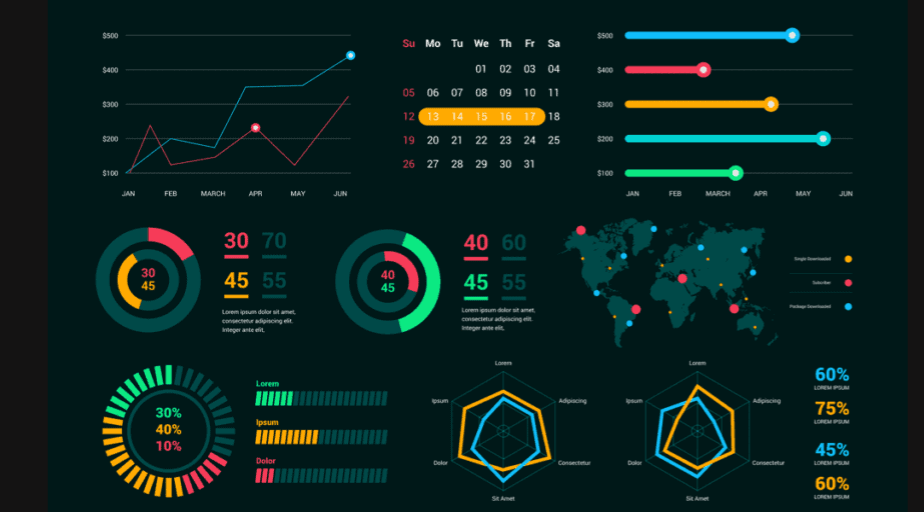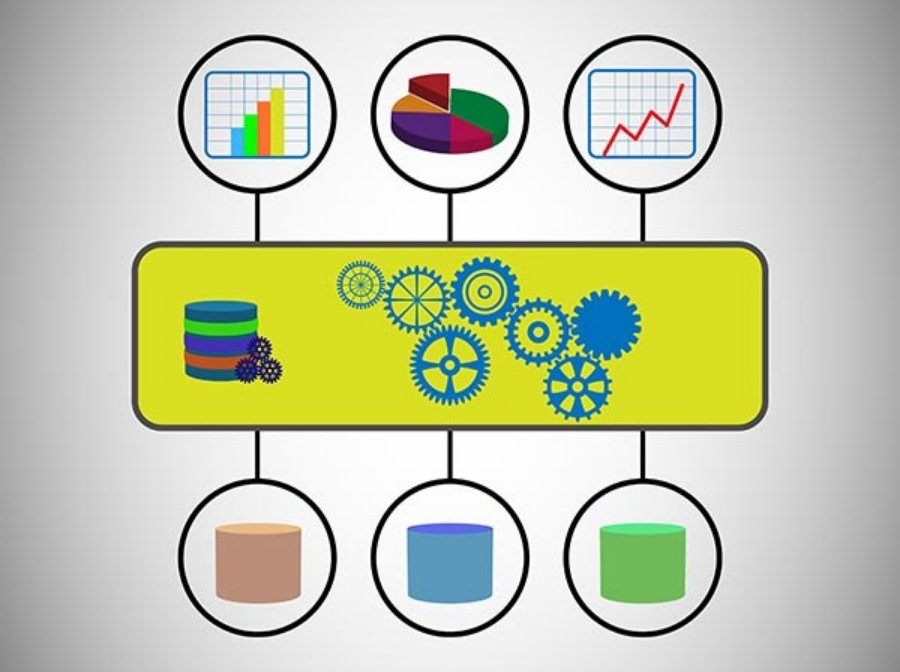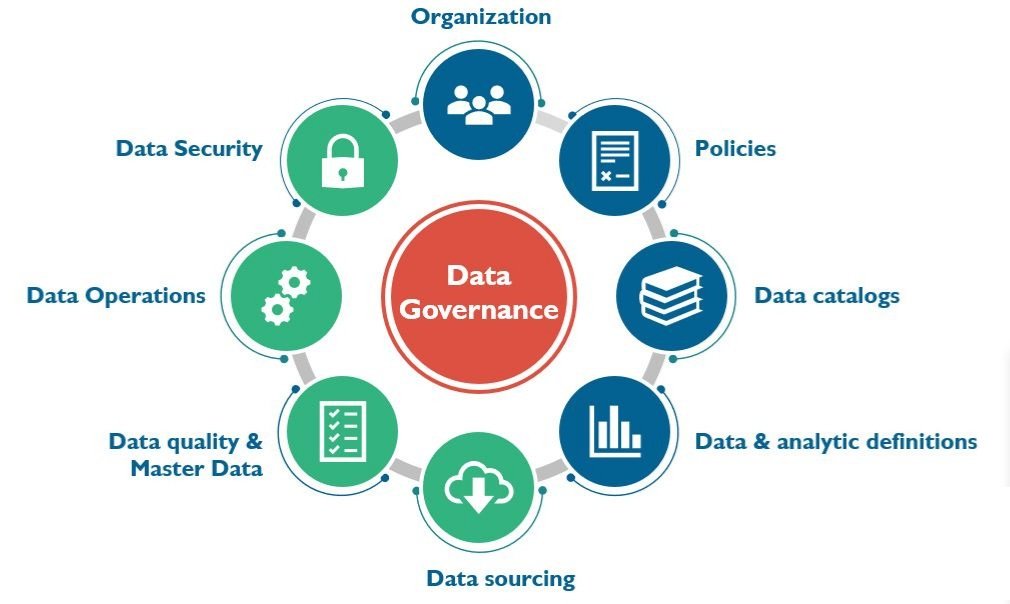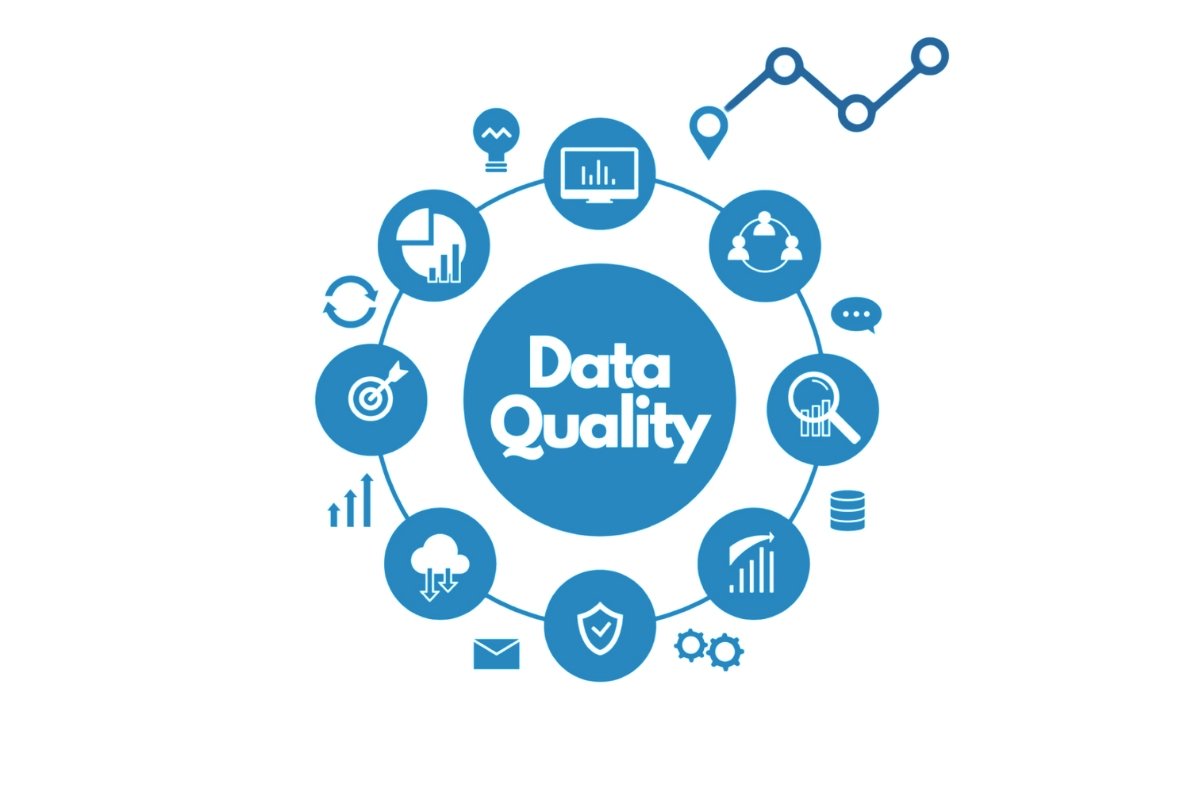DATA ANALYTICS
Step up your game in the Big Data Age!

DATA ANALYTICS
We use data analytics to make data-driven decisions. The process of discovering meaningful patterns and trends in data using statistical analysis and quantitative methods. We collect data from different sources, including business transactions, feedback from customers, surveys, sensors, weblogs, and social media. In data analytics, there are many related processes, including data mining, predictive analytics, and business intelligence. Data analytics, for example, can be used to predict customers’ next best actions or to guide product development.
WHAT IS DATA ANALYTICS
Data analytics have become a vital part of any business. It is a valuable asset that can remarkably help you cut costs, increase revenue, boost productivity, and improve customer loyalty. The best thing about data analytics is that you can use it with data you already have collected from a variety of internal, online, and external sources.
Data analytics is also known as data analysis. The terms are often used interchangeably. In general, however, data analytics is focused on extracting meaningful insights from large sets of data – often called big data – while data analysis is more focused on extracting value from smaller data sets.
Data Analytics is the procedure of exploring data sets to draw conclusions about the information they contain, more and more with the aid of specialized systems and software. Data Analytics is a form of business intelligence that turns raw data into meaningful information that can be used to improve business processes. Its applications include predicting customer behavior, optimizing supply chains, understanding market trends, improving operations efficiency, conducting market research, building sales forecasts and even managing risk.
The world is digitizing at an unprecedented pace, with more and more data being generated every day. There is a rapidly growing need for data analysts who can derive actionable insights from this ocean of information. Our program will prepare you for a career as a professional data analyst who can make sense of the vast amount of data available today, drawing useful inferences to help companies expand their revenue base and improve their operations.
The field of data analytics is rapidly expanding and becoming a key part of successful businesses across industries. In fact, according to the Bureau of Labor Statistics, the demand for professionals trained in data analytics is growing at a rate that is much faster than average.
Businesses use data analytics to better understand their customers, improve decision-making and drive growth. Data analytics also enables businesses to gain an advantage over competitors through gaining greater insights into customer behavior and business outcomes.
The Data Analytics program will equip you with advanced analytical and statistical knowledge, skills, and competencies. You will learn how to use in-depth analysis and data mining techniques to generate actionable insights for business strategies, identify new business opportunities, and make strategic decisions.

BENEFITS OF DATA ANALYTICS IN YOUR BUSINESS
Today, businesses collect data along every way of the customer journey. This information might include interactions on social media, mobile app usage, digital clicks, and more, all donating to a data fingerprint that is completely unique to its owner.
Customer’s social standards have certainly changed and as a result, expectations have shoot-up. Below are five benefits that businesses can reap from data analytics in terms of driving positive outcomes for their own business and their customers, while still maintaining and facilitating the highest level of data protection.
Improving and Optimizing the Customer’s Experience
Managing operations poorly can and will result in a host of costly issues, including a significant risk of damaging customer loyalty. In order to satisfy customer expectations and achieve operational excellence, analytics is used to design, control, and optimize business operations in the production of goods and services.
Proactive & Anticipative Needs
Businesses are progressively under competitive pressure to not only acquire new customers but also understand their existing customers need to be able to optimize customer experience and develop long-standing relationships. Customers expect companies to know them, form relevant interactions, and provide a seamless experience across all touchpoints by sharing their data and allowing relaxed policy in its use.
Thus, businesses need to capture and reconcile multiple customer identifiers such as cell phone, email and address, to one single customer ID. Both traditional and digital data sources must be brought together to understand customers behaviors as customers are increasingly using multiple channels in their interactions with companies. Moreover, customers expect and companies need to deliver contextually relevant, real-time experiences.
Personalisation & Service
Businesses are still struggling with the structured data and need to be immensely responsive to cope with the volatility created by today’s customers that are engaging via digital technologies. Making the customer feel personally valued and being able to respond in real-time is only possible through advanced analytics.
Diminishing Risk & Fraud
Security and fraud analytics aims to protect all financial, physical and intellectual assets from misuse by internal and external threats. Structure data and analytics capabilities will deliver optimum levels of fraud prevention and overall organizational security which is deterrence that requires mechanisms that allow companies to quickly detect potentially fraudulent activities and anticipate future activities as well as identify and track perpetrators.
Use of statistical, network, path, and big data methodologies for predictive fraud tendency models leading to alerts will ensure timely responses triggered by real-time threat detection processes and automated alerts and reduction.
Advanced analytical techniques can be deployed to improve efficiency and field operations productivity as well as optimize an organizational workforce according to business requirements and customer demands. Prime utilization of data and analytics will also ensure continuous improvements are initiated on an ongoing basis as a result of end-to-end view and measurement of key operational metrics.
For instance, in many companies, inventory is the largest item in the current assets category – too much or not enough inventory can directly affect a company’s direct costs, profitability and reliability. Data analytics can support inventory management by providing uninterrupted production, sales, and/or customer service levels at minimum cost. The use of data analytics can provide transparency into current and planned inventory positions as well as deliver insight into drivers of height, composition and location of stock and support the determination of inventory strategy and decision making. Customers expect a pertinent, seamless experience and for companies to know them wherever they engage.
IMPORTANCE OF DATA ANALYTICS
The significance of data analytics in any region is compounded, developing massive quantities of information that may offer beneficial insights into the field. In the last ten years, this has brought about a surge in the data marketplace. In an effort to gain decision-making insights, the compilation of data can be supplemented via its evaluation. data analytics assist groups and companies gain insight into the huge amount of understanding they need for additional production and boom.
For businesses to attain a strategic edge, data analytics plays a vital role. Here are a few ways that data analytics is important for businesses today:
Product Development
Data analytics offers both exploration and estimation capability for information. It allows one to comprehend the market or process’s current state and offers a solid base for forecasting results. Data analytics helps companies to understand the current business situation and change the processor because of the need for a new product creation that meets market requirements.
Competency in Operations
The significance of data analytics finds more ways to streamline operations and increase benefit levels. It helps to identify possible issues, avoids waiting periods, and takes action on them. It helps businesses optimize their performances. Executing it in a business model means organizations can help reduce costs by identifying more efficient ways of doing business and by storing large amounts of data.
Target Content
Studying what consumers wish in advance improves consumer orientation in sales campaigns. It motivates advertisers to tailor their advertising to a subset of the entire consumer base. It also lets you figure out which client base group can better respond to the initiative. It also allows you to save money to convince a buyer to buy and increases the overall performance of the sales activities.
WHY IS DATA ANALYTICS GROWING?
The significance of data analytics in any region is compounded, developing massive quantities of information that may offer beneficial insights into the field. In the last ten years, this has brought about a surge in the data marketplace. In an effort to gain decision-making insights, the compilation of data can be supplemented via its evaluation. data analytics assist groups and companies gain insight into the huge amount of understanding they need for additional production and boom.
For businesses to attain a strategic edge, data analytics plays a vital role. Here are a few ways that data analytics is important for businesses today:
Value Chain Analysis
The business will allow you to get insights into the fee chains which are accomplished through data mining. Data analytics could be a consequence, make clear how the present day will permit the corporation to discover the gold mine that is the route to business growth.
Industry Knowledge
Industry awareness is every other element you can apprehend once you have evaluated outcomes, it can monitor your business enterprise within the near destiny and what is the economy’s energy now. This is due to the fact that before anybody else you could profit your business.
New Opportunities
Since the economy tends to change to maintain track of dynamic developments, while the benefit era is one that is normally pursued with the aid of the agency, the data Analytics presents evaluated statistics, which permit them to look earlier than the time, for greater alternatives.
DATA ANALYTICS SERVICES
Data Visualization
Data visualization is a method of representing data that uses visual components to depict information. Data visualization often makes use of graphs, charts, and diagrams. Data can be displayed with a wide variety of approaches, from basic tables and lists to 3D interactive visualizations. The right data visualization can take your business to the next level.
Data Warehousing
Data warehousing is a technology used to store and extract data from one or more data sources, enabling businesses to analyze the data in an efficient and convenient manner. Data warehouses are designed to provide businesses with access to historical data in order to make better business decisions. This technology allows various departments within a business to share information and work together on projects.
Data Advisory
The term “advisory” is meant to denote an elevated level of expertise. In many cases, the firm providing the advisory service will have access to more information than their client, and therefore may be in a position to steer them toward more productive decisions. Data advisory services can include anything from a government agency receiving consulting on what data would be most useful to collect, to an advertising agency picking up data analysis on the effectiveness of their ads.
Data Migration
Data migration is often used to describe the transfer of data from one system to another, or even from one storage medium to another. For example, migration could be used to move from a legacy mainframe system to a new system running on open-source software. Migration may also refer to the copying of data from a source to a target without modifying or deleting any data in the source.
Master Data Management
It is an ongoing process of matching data in each record with other records which refer to the same thing, in order to ensure that all relevant data is linked together. This enables a consistent view of the item being described by the various records so that they can be analyzed as one entity. The aim is to avoid duplication and inconsistencies in business processes and systems.
Master data management is the process of managing and consistently applying common attributes to related business objects and their attributes, in order to support information interchange and analysis, and enhance data quality.
Data Governance
Data governance refers to policies that help organizations ensure that data are utilized effectively and efficiently, and that information is available when it is needed. It also refers to the controls that are in place to ensure that access rights to data are managed and monitored. There’s a reason why data governance and information management are so important for businesses today. Data is now at the heart of every organization and its success. However, a lack of proper data governance can lead to all sorts of problems including data silos, redundant data collections, information security issues, and more.
Data Quality Management
Data quality management is a process of ensuring that incoming data is clean and accurate. Data quality refers to the effectiveness of the processes that collect and update data, as well as the accuracy, timeliness, completeness, and consistency of the data. Clean data that is effective in accomplishing its business objective can increase an organization’s business performance. Data quality management is therefore crucial in maintaining an enterprise’s competitive advantage.
Data Monetization
Data monetization is a process of extracting value from data, through analysis and optimization. It is essentially the practice of collecting, accessing, and analyzing large volumes of data to derive insights and make decisions. Data monetization can take on many forms in our increasingly digital world, but it essentially boils down to two main approaches: data-driven decision-making and data as an asset. Data monetization is a subset of the broader process of data analytics, which is the extraction of meaning and knowledge from data.
FAQ
What is Data Analytics in simple terms?
Data analytics allows making conclusions whilst analyzing data from informational assets. Data analytics also makes use of techniques via technological techniques and algorithms that manage data for human information and utilization. Data analytics enables groups to optimize their maximum capacities.
What are some Data Management Techniques?
Simplify the right of entry to data that is evolving. While more data is to be had there may be higher predictability. Consequently, commercial enterprise analysts and data scientists are capable of getting the right of entry to greater data.
If data is easily available, predictability will increase which supports higher consequences. SAS helps with the aid of supporting native data access abilities, which enables the manipulation of numerous types of data from differentiated structures and architectures.
What is the role of Data Analytics?
Data analysts manipulate data to useful resources in their organizations to make knowledgeable choices. Using techniques from a range of content material regions, arithmetic, and statistics, data analysts make predictions followed by conclusions that shed mild on destiny consequences for commercial enterprise optimization.
What’s the differentiation between Data Analytics and Data Analysis?
The difference between analytics and analysis is scalability. Data analytics is a generalized time period and is the umbrella over data evaluation. Data evaluation is the examination of data. Data evaluation includes data collection, business enterprise, storage, and strategies and gear used for analysis.
We are providing end to end Data Solutions starting from Data Mining to Data Analytics
WHY CHOOSE US?
After knowing the benefits of Data Analytics and the importance of Data Analytics, you might wonder what to consider before choosing us.
At LeadsProspex, we are committed to providing the best possible services in the market when it comes to Data Analytics. We take this commitment seriously and will continue to strive for 100% customer satisfaction.
We understand that data is a critical part of your business and that it is important that your data is properly monitored and managed.









